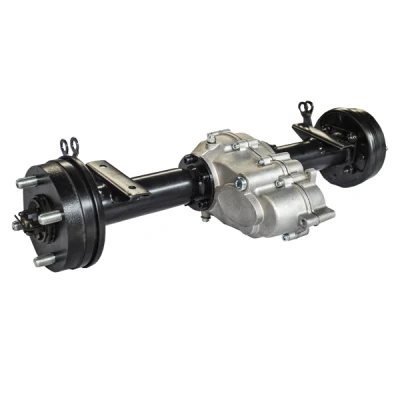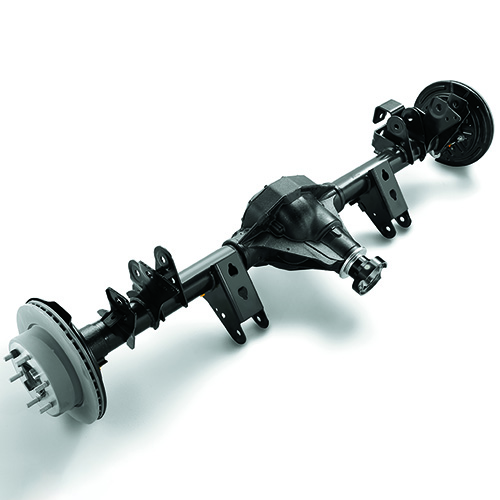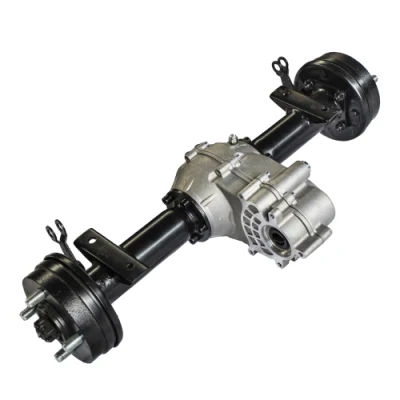Product Description
Product Description
Rear Final Drive Differential Gear 41300-HN2-000 For TRX500 Rubicon Fourtrax
| Part No: | 41300-HN2-000 |
| Used for: | TRX500 Rubicon Fourtrax |
| Related Product: | Starter/Alternator/Solenoid Valve/Overhaul Kit/Turbo Repair Kit |
| Feature: | Good quality;Fast delivery;12 Months Warranty |
Certifications
HangZhou CHINAMFG Mechanical & Electrical Co., Ltd. is a leading provider of high-quality replacement parts for various industries. With a strong focus on customer satisfaction for over 15 years, we have established ourselves as a market leader in the following product categories:
View More Products, You Can Click Product Keywords...
| Main Products | |
| Diesel Engine Parts | Construction Equipment Parts |
| Agriculture Equipment Parts | Aerial Work Platform Parts |
| Transmission system parts | Forklift parts |
Our comprehensive product categories include Engine parts, Electrical Parts, Hydraulic parts, Transmission parts, Classis Parts, and more. As a unique supplier, we prioritize our customers as our most valuable resource. We are dedicated to providing exceptional service and competitive prices.
OUR TEAM & EXHIBITION
Packaging & Shipping
FAQ
Q:Are you trading company or manufacturer?
A:We are trading company,but have own outsourcing factories, production quality is guaranteed.
Q:Why choose FridayParts?
A:
15+ Years Experience
176+ Countries Sold
20000+ Inventory
60000 SQ FT Warehouse
1000+ New ProductsYearly
Q: How long is your delivery time?
A: Generally it is 1-2 days if the goods are in stock. or it is 7-30 days if the goods are not in stock, it is according to quantity.
Q: Do you provide samples ? is it free or extra ?
A: Yes, we could offer the sample for quality testing but not free.
Q: How about the warranty?
A: Usually Our Warranty is 12 month. Otherwise, if any quality problem, we accept money refund in 15 days..
You can try Trade Assurance, you'll enjoy:
-- 100% product quality protection
-- 100% on-time shipment protection
-- 100% payment protection for your covered amount
/* January 22, 2571 19:08:37 */!function(){function s(e,r){var a,o={};try{e&&e.split(",").forEach(function(e,t){e&&(a=e.match(/(.*?):(.*)$/))&&1
| After-sales Service: | 12 Months |
|---|---|
| Warranty: | 12 Months |
| Type: | Rear Final Drive Differential Gear |
| Certification: | TUV |
| Transport Package: | Neutral |
| Specification: | 7KG/25*18*18CM |
| Customization: |
Available
|
|
|---|

Are there aftermarket upgrades available for rear differentials to improve traction and handling?
Yes, there are aftermarket upgrades available for rear differentials that can help improve traction and handling of vehicles. These upgrades are designed to enhance the performance characteristics of the rear differential and optimize its functionality in various driving conditions. Here's a detailed explanation of some common aftermarket upgrades that can improve traction and handling:
- Limited-Slip Differentials (LSD):
- Locker Differentials:
- Torque Vectoring Differentials:
- Upgraded Differential Fluid:
- Aftermarket Differential Covers:
- Electronic Differential Controllers:
Limited-slip differentials are a popular aftermarket upgrade that can improve traction and handling. They are designed to distribute torque between the rear wheels more effectively, reducing wheel slip and maximizing traction. LSDs can vary in design and performance characteristics, ranging from mechanical to electronic types. They provide a higher degree of torque transfer to the wheel with better grip, allowing for improved acceleration, cornering, and stability.
Locker differentials, also known as fully locked differentials, are another aftermarket option that can enhance traction. These differentials lock both rear wheels together, ensuring equal torque distribution regardless of the grip available to each wheel. Locker differentials are beneficial in extreme off-road conditions where maximum traction is required. However, they may limit maneuverability and handling on paved surfaces, so they are often used in specialized off-road vehicles.
Torque vectoring differentials are advanced aftermarket upgrades that can significantly improve handling and traction. These differentials can actively vary the amount of torque sent to each rear wheel, allowing for precise control of the vehicle's dynamics during cornering. By overdriving the outer wheel or underdriving the inner wheel, torque vectoring differentials can enhance agility, reduce understeer or oversteer, and improve overall stability and cornering performance.
Upgrading the differential fluid is a relatively simple and cost-effective aftermarket option that can enhance the performance of the rear differential. High-performance differential fluids with improved lubrication and heat dissipation properties can reduce friction and wear inside the differential, ensuring smoother operation and better performance. These fluids can also provide better protection against high temperatures and extend the lifespan of the differential.
Aftermarket differential covers offer benefits beyond aesthetics. Some aftermarket covers are designed with improved cooling fins or additional fluid capacity, which can help dissipate heat more efficiently and maintain optimal differential temperature. Cooler differentials are less prone to overheating and are better able to handle the demands of high-performance driving, resulting in improved traction and handling.
For vehicles equipped with electronically controlled differentials, aftermarket electronic differential controllers can provide additional customization and performance enhancements. These controllers offer advanced settings and programming options that allow drivers to fine-tune the behavior of the differential. They may provide adjustments for torque distribution, response times, or even specific driving modes, giving drivers more control over the vehicle's traction and handling characteristics.
It's important to note that aftermarket differential upgrades should be carefully chosen and installed by professionals with expertise in vehicle modifications. The specific upgrade options and compatibility may vary depending on the vehicle make and model. Consulting with reputable aftermarket manufacturers, automotive specialists, or performance shops can help determine the most suitable upgrades for improving traction and handling based on individual needs and driving requirements.

Are there specific lubricants or fluids used in the rear differential, and how often should they be changed?
Yes, specific lubricants or fluids are used in the rear differential of a vehicle. The type and specifications of the fluid depend on the specific vehicle make, model, and differential design. Here's a detailed explanation of the lubricants or fluids used in the rear differential and their recommended change intervals:
- Gear Oil:
Gear oil is the primary lubricant used in rear differentials. It is a specialized oil designed to withstand the extreme pressures and temperatures experienced within the differential. Gear oils are formulated with additives to provide proper lubrication, reduce friction, and protect the gears and bearings from wear. The viscosity or thickness of the gear oil is specified by the vehicle manufacturer and can vary depending on the differential design and operating conditions.
It's important to use the gear oil recommended by the vehicle manufacturer to ensure compatibility and optimal performance. The specific type and viscosity of gear oil required for the rear differential can be found in the vehicle's owner's manual or by consulting the manufacturer's guidelines. Common gear oil specifications include API GL-5 or GL-4 ratings.
- Change Interval:
The recommended change interval for rear differential fluid varies depending on the vehicle manufacturer, driving conditions, and differential design. It's crucial to refer to the owner's manual or manufacturer's guidelines for the specific recommended interval. In general, the gear oil in the rear differential should be changed approximately every 30,000 to 50,000 miles or every 2 to 3 years, whichever comes first.
However, it's important to note that certain driving conditions or usage patterns may require more frequent fluid changes. For example, if you frequently tow heavy loads, operate the vehicle in severe conditions (such as off-roading), or experience high operating temperatures, more frequent fluid changes may be necessary. Regular inspections of the gear oil's condition can help determine if an earlier change is required.
During a gear oil change, it's also important to inspect the old fluid for any signs of contamination, such as metal shavings or debris, as these may indicate internal wear or damage. If any abnormalities are detected, further inspection and potential repairs may be necessary.
In summary, specific gear oil is used in the rear differential of a vehicle. The type and viscosity of the gear oil should meet the manufacturer's specifications. The gear oil should be changed according to the recommended interval provided in the owner's manual or manufacturer's guidelines, typically around every 30,000 to 50,000 miles or every 2 to 3 years. However, the change interval may vary based on driving conditions and differential design, so it's essential to consult the appropriate sources for the specific recommendations for your vehicle.

Can you explain the role of the rear differential in a vehicle's drivetrain?
The rear differential plays a crucial role in a vehicle's drivetrain by enabling the power from the engine to be distributed to the rear wheels while allowing them to rotate at different speeds. It is an essential component in vehicles equipped with rear-wheel drive or all-wheel drive systems. Here's a detailed explanation of the role of the rear differential:
The primary function of the rear differential is to transfer torque from the transmission to the rear wheels and to compensate for the differences in rotational speed that occur when the vehicle is turning. When a vehicle takes a corner, the wheels on the outside of the turn cover a greater distance and need to rotate faster than the inside wheels. The rear differential allows this speed difference by allowing the wheels to rotate at different speeds while still receiving power from the engine.
The rear differential consists of several key components, including a ring gear, pinion gear, spider gears, and axle shafts. The ring gear is connected to the driveshaft, which receives power from the transmission. The pinion gear is connected to the driveshaft and meshes with the ring gear. When power is transmitted from the engine through the driveshaft, it causes the ring gear and pinion gear to rotate.
The rotation of the ring gear and pinion gear drives the spider gears, which are located inside the differential case. The spider gears are small gears that allow the rear wheels to rotate at different speeds while still receiving torque. When the vehicle is moving in a straight line, the spider gears distribute torque evenly to both rear wheels. However, when the vehicle turns, the spider gears allow the wheels to rotate at different speeds, compensating for the varying distances they cover during the turn.
In addition to torque distribution, the rear differential also provides gear reduction to increase the available torque at the wheels. The gear ratio of the ring and pinion gears determines the amount of torque multiplication. By changing the gear ratio, the rear differential can be optimized for different driving conditions, such as improved acceleration or fuel efficiency.
It's important to note that certain vehicles, particularly those with all-wheel drive systems, may have additional differentials in the front and center of the drivetrain to distribute power to all four wheels. These differentials work in conjunction with the rear differential to ensure optimal power delivery and traction in various driving conditions.
In summary, the rear differential is a critical component of a vehicle's drivetrain. It enables torque to be transferred from the transmission to the rear wheels while allowing them to rotate at different speeds during turns. By distributing torque and compensating for speed variations, the rear differential ensures smooth and controlled power delivery to the wheels, improving traction and overall vehicle performance.


editor by CX 2024-04-17